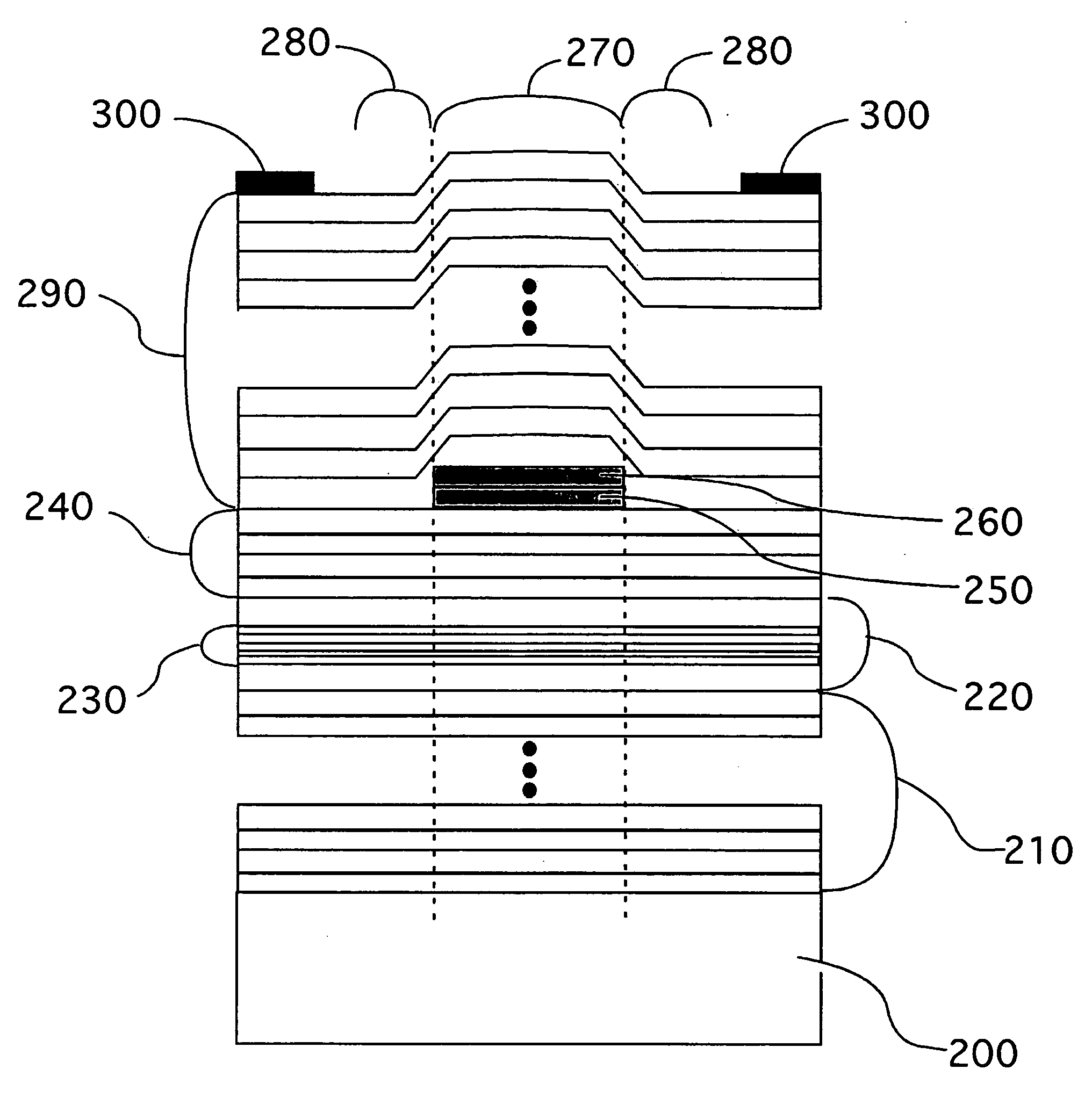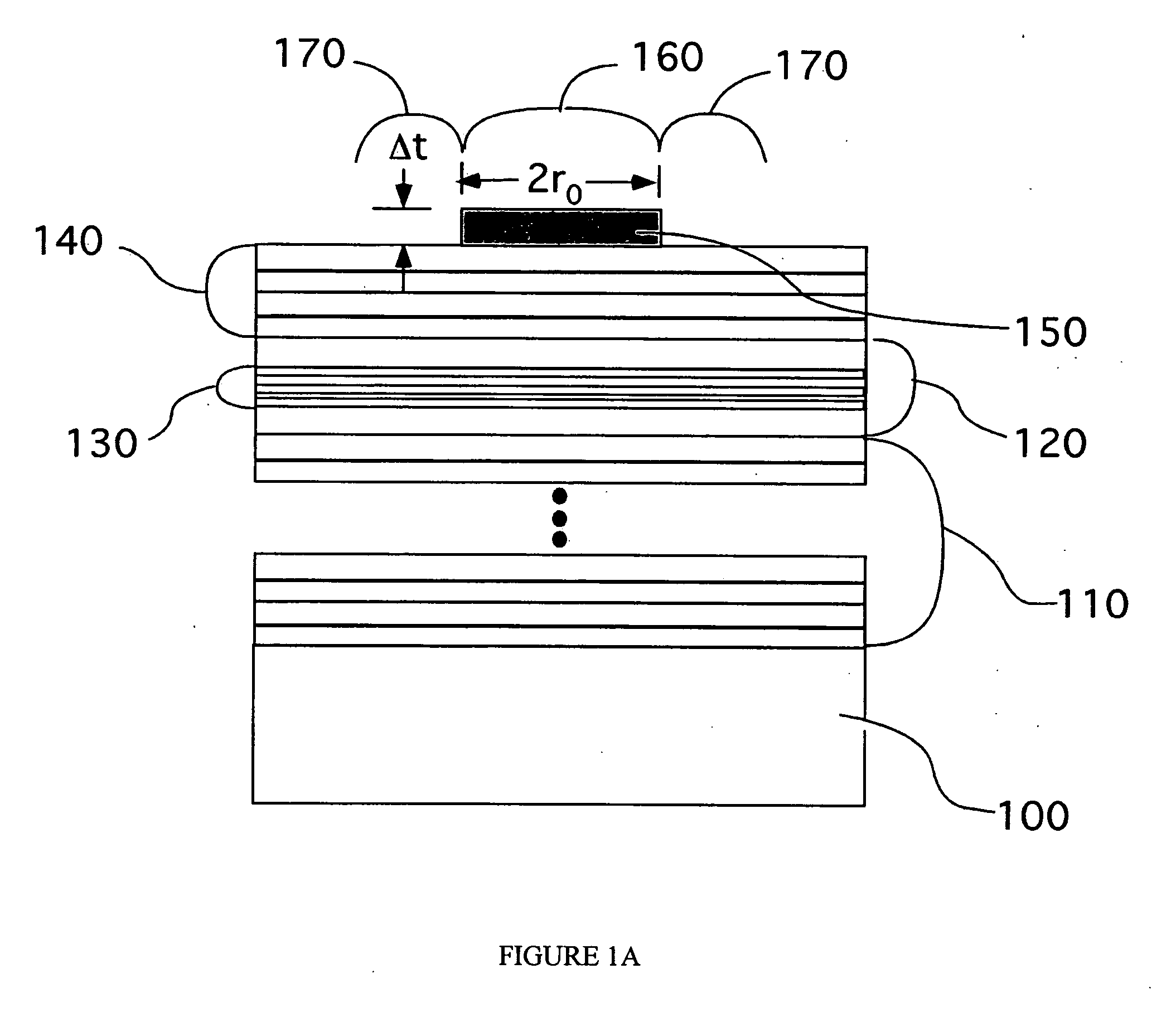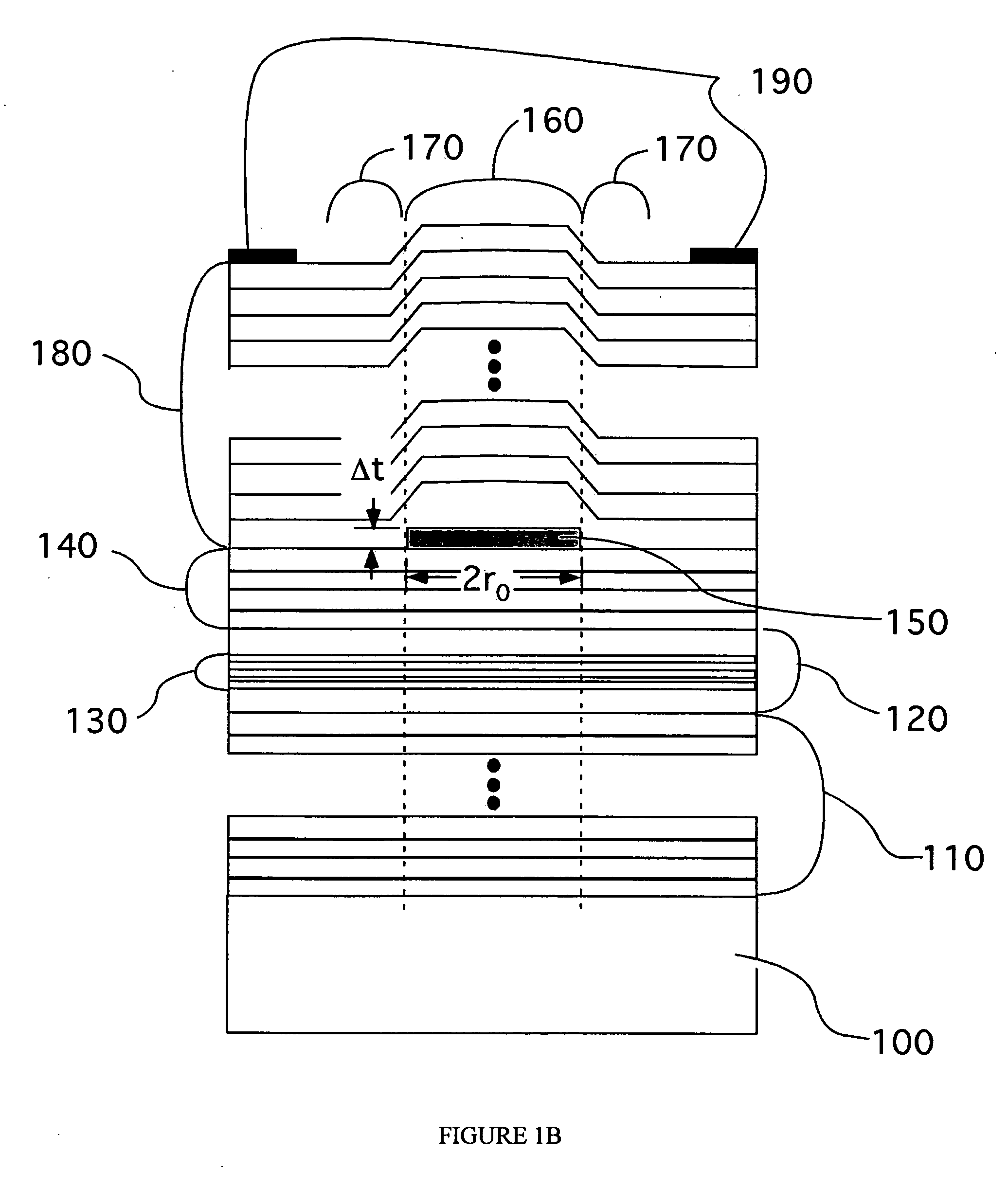Epitaxial mode-confined vertical cavity surface emitting laser (VCSEL) and method of manufacturing same
a vertical cavity surface and laser technology, applied in semiconductor lasers, laser details, optical resonator shape and construction, etc., can solve the problems of lateral definition of both, high device performance damage, optical loss, etc., and achieve low threshold current, high efficiency, and high speed
- Summary
- Abstract
- Description
- Claims
- Application Information
AI Technical Summary
Benefits of technology
Problems solved by technology
Method used
Image
Examples
example 1
Reference is first made to FIG. 1A. FIG. 1A shows a schematic illustration of the heterostructure of a partial semiconductor VCSEL cavity. To form the partial cavity an epitaxial growth is performed on a substrate, layer 100, which may also contain various buffer layers used to prepare the crystal for growth of a lower DBR mirror layers 110. The lower DBR typically consists of semiconducting layers nominally lattice-matched to the substrate, but in some cases, for example for nitride semiconductors, the substrate may be sapphire or SiC. For AlGaAs VCSELs the substrate is generally GaAs. The lower DBR typically consists of alternating layers of semiconductors, for example AlxGa1-xAs / AlyGa1-yAs, with alternating refractive indices in the layers to cause a constructive interference in the reflections of the DBR and yield high reflectivity at the desired wavelength. On this lower DBR layer 110 is grown an active region 120 consisting of a spacer layer and active layers 130 made of eith...
example 2
FIG. 2 shows an embodiment used to confine electrical current to the same epitaxial mesa that confines the optical mode based on a tunnel junction. Layer 200 is a substrate receiving epitaxial crystal growth, on which may also be initially deposited buffer layers for surface smoothing and preparation. Layer 210 is a lower DBR mirror with at least the upper portion closest to layers 220 containing impurity doping to make it electrically conductive. Typically, for AlGaAs VCSELs it is desirable to dope these upper layers n-type with Si, Se, or other n-type impurities. The active layer 220, and a portion of the upper mirror 240 and the mesa forming layers 250 and 260 can be grown in the same growth step. Assuming the upper part of the lower mirror, layers 210 are doped n-type, the upper mirror layers 240 are doped p-type using impurities such as C, Be, Zn, Mg, or others, to form a p-n junction for electron and hole injection into the active layers 220. These electrons and holes are then...
example 3
Referring to FIG. 6, a lower semiconductor DBR consisting of layers 310 is grown on substrate 300, that may include additional buffer layers, followed by an active region 320 containing active layers 330 that confine electron and hole charge carriers. The upper DBR includes layers 340, with a pair number that may vary from zero or greater, and a mesa layer 350. Following epitaxial growth impurities are introduced into the upper cavity region layers 340 to form the crystal regions 390, using either diffusion or implantation, while masking the mesa layer 350 and the crystal region beneath it from the impurities. In this embodiment at least the upper region of the lower DBR layers 310 adjacent to the active region 320 are doped with n-type impurities grown into the crystal, while the upper layers 340 and mesa forming layer 350 are doped p-type. The selective introduction of impurities outside the mesa layer 350 can be performed using diffusion or implantation with the same masking mat...
PUM
 Login to View More
Login to View More Abstract
Description
Claims
Application Information
 Login to View More
Login to View More - R&D
- Intellectual Property
- Life Sciences
- Materials
- Tech Scout
- Unparalleled Data Quality
- Higher Quality Content
- 60% Fewer Hallucinations
Browse by: Latest US Patents, China's latest patents, Technical Efficacy Thesaurus, Application Domain, Technology Topic, Popular Technical Reports.
© 2025 PatSnap. All rights reserved.Legal|Privacy policy|Modern Slavery Act Transparency Statement|Sitemap|About US| Contact US: help@patsnap.com



